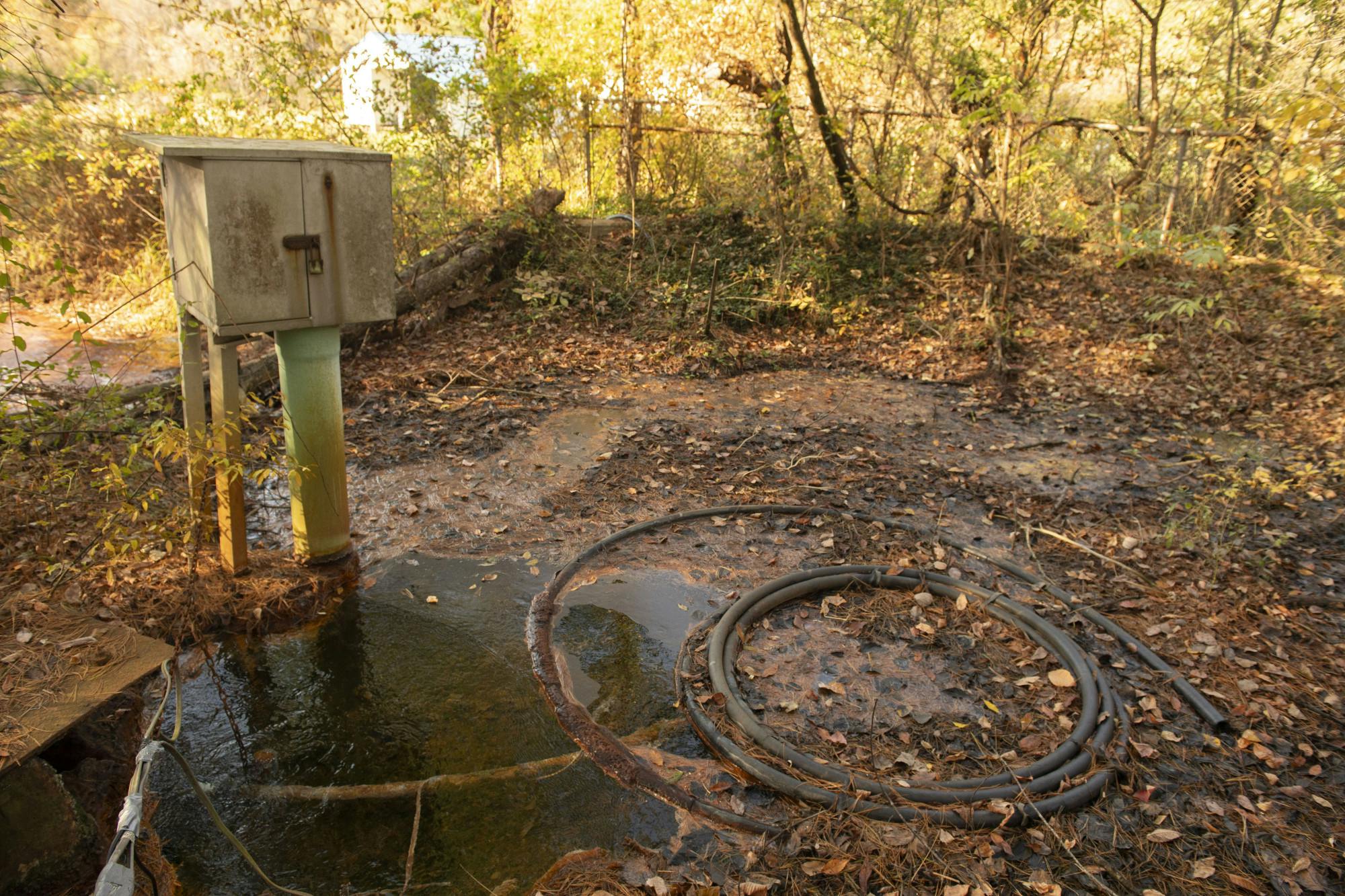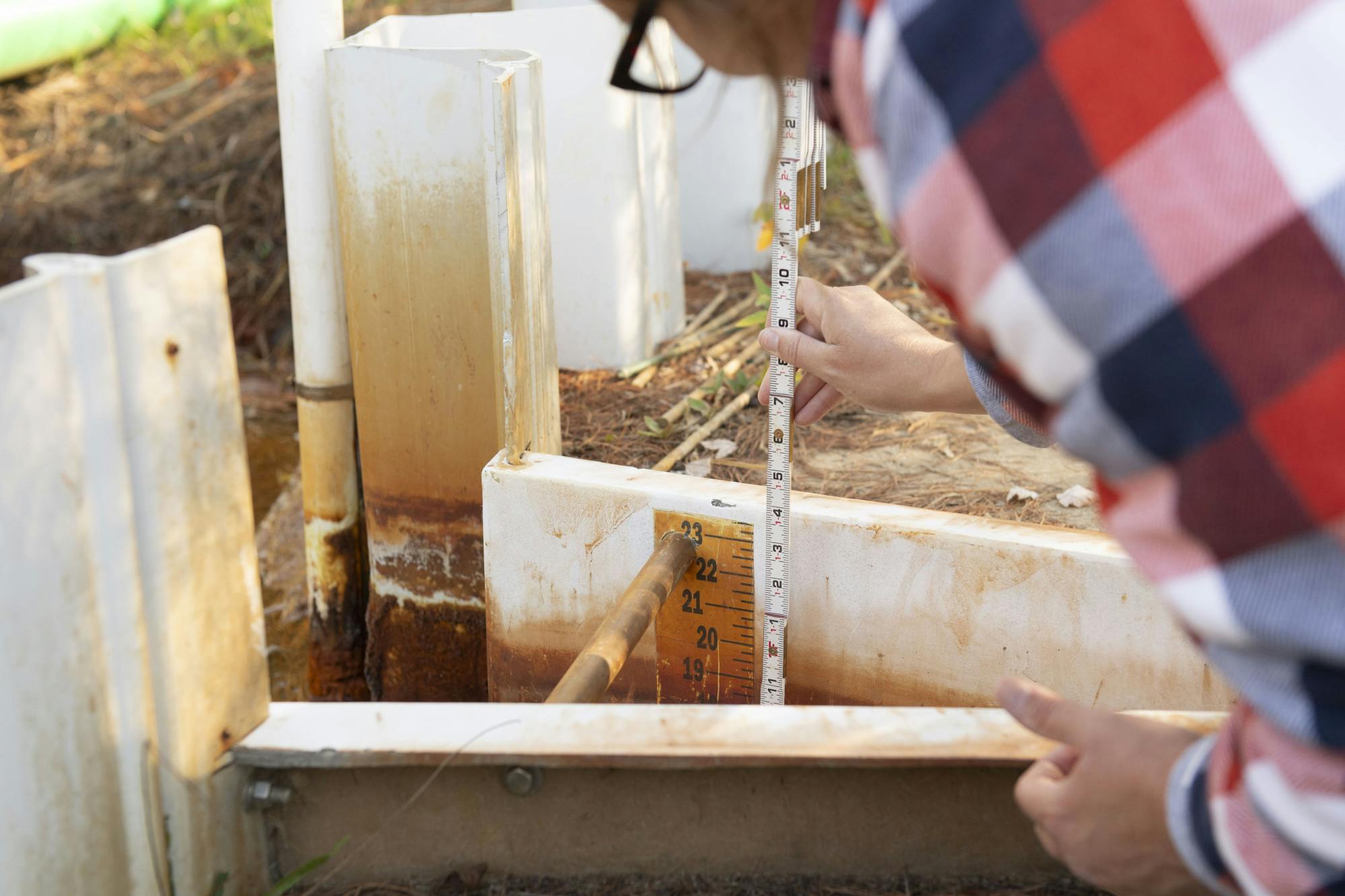Ohio’s rich history of coal mining is seen through several viewpoints including old run-down buildings, historical markers and the no trespassing signs that surround mining entrances. The most prominent one, however, is the deep orange color that has stained the waterways that run throughout Appalachia.
While this stain has been seen in the rivers for decades, time has proved to be a healing factor along with several outside forces who have come together to speed up the process including Rural Action.
The non-profit organization focuses on creating a more equitable economy by utilizing the area's resources in sustainable ways.
Rural Action concentrates on crucial areas like energy, forestry, zero waste and recycling, food and agriculture, environmental education and watershed restoration.
One of Rural Action’s biggest projects, one the watershed team focuses on daily, is their work in Sunday Creek, which is a tributary of the Hocking River running about 27 miles through Southeast Ohio.
Much of the creek is contaminated by acid mine drainage or AMD. Michelle Shively MacIver, the Director of Project Development at True Pigments, says a chemical reaction underground in the past mining caves is what creates the AMD.
“When (the rooms) fill with water, and if have water, oxygen, and pyrite,” Shively MacIver said. “Those three things together are what set off this chain of chemical reactions, and what you end up with is sulfuric acid and the iron oxidizes.”
True Pigment is a branch of Rural Action aiming to turn the AMD into usable paint pigments. The project’s research started about 10 years ago and has become an important part of AMD clean-up in Sunday Creek, according to Shively-Maciver. One of the sites used to collect samples of the AMD is located off Truetown Road.
“It's one of the worst AMD discharges in the State of Ohio,” Shively MacIver said.

The contaminated water flows directly from an underground mine that opened up and dumps around 1,000 gallons per minute into Sunday Creek which can add up to over 2 million pounds per year.
The need for a solution to the problem was fueled by the sheer amount of contaminated water flowing from the mine. Shively MacIver says they would quickly run out of space to bury AMD and it is too expensive to landfill.
Shively MacIver said aside from being able to help reduce the amount of AMD, True Pigments is also able to operate in a cost-effective way. By selling the product, they can offset the cost of treatment, pay for it completely, or even make a little bit of profit depending on the concentrations of iron at the site.

“As things change with climate change and things transition,” Shively MacIver said. “I think it's gonna be even more important for us to have as much clean water as we can possibly have, so even though we may not be using streams like Sunday Creek or Raccoon Creek for drinking water.”
Rural Action completes projects by using grants to offset the costs. A recent project is wetland restoration along parts of Sunday Creek affected by AMD.
Rural Action Senior Director of Ecological Restoration Nate Schlater said the project was a little over $120,000. The grant Rural Action Received was from the H2Ohio Wetland Projects funding.
“In the scheme of things, it's not a lot of money, but I think that some of these projects don't require a tremendous amount of engineering and can really reset the streamside habitat to what it naturally should be, and put a little money in the landowner's pocket for doing that,” Schlater said.
Portions of the money received will be divided up among different aspects of the project. Money is set aside for the purchase of 3,000 trees to be planted on the site in 2026 as well as treating nonnative, invasive species, according to Schlater.
“We've been working to restore Sunday Creek for almost 30 years now,” Schlater said. “It's important now because the money's here now, but also because the willing landowners when they're willing, that's when you want to work with them.”
In addition to the wetland projects and True Pigments, Rural Action works with the Ohio Department of Natural Resources to help run and maintain several doser across Southeast Ohio.
These dosers, distribute the AMD-contaminated water with lime to help offset the chemicals and turn the contaminated water into clean water.
AmeriCorps Members Anisa Corp and Bella Kirchner work with Rural Action on their watershed team. Corp and Kirchner said it is important for people to understand how AMD affects waterways and how Rural Action is working to help them.
“It's important to get a lot of outreach in this area about AMD since it doesn't seem like anybody seems to know how it's affecting their water quality and their quality of life around this area,” Corp said.
Kirchner said Rural Action's work with Sunday Creek gives its members and volunteers a chance to engage with the community.
“I've met a lot of people who I would consider friends now, and not just my coworkers, but just people from the community,” Kirchner said. “When we do events volunteers who come and help, it's really nice to meet them, and it's also nice just to get the experience that applies to what I've studied.”
AMD will forever be an issue in Southeast Ohio, but Rural Action works to maintain the seeps as best it can, and as a result, it has begun to see improvements in the environment.
“We know it's possible to bring a dead stream back to life and I mean, personally, I think that's always worth it,” Shivley MacIver said. “These areas are important to the larger ecosystem. They're important for the plants, the animals, and all of the aquatic organisms that call those streams home.”






